The latest Housing Assistance report from the Australian Institute of Health and Welfare (AIHW) showed that “there has been a decline in the proportion of social housing households in Australia, falling from 4.7% of all households in 2013 to 4.1% in 2023”:
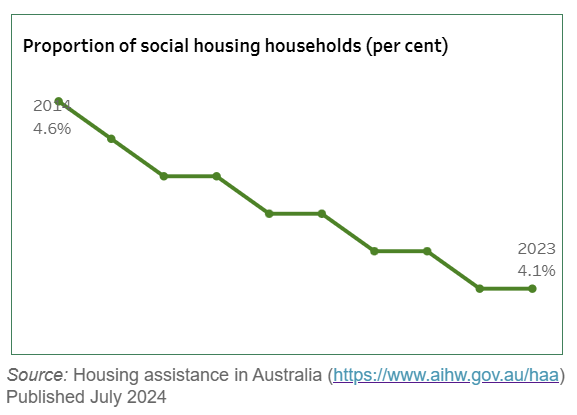
AIHW notes that there were around 446,000 social housing dwellings in Australia, a mere 3,000 increase from 2022.
In fact, Australia’s social housing stock has only grown by around 59,500 (15%) from 2005, when there were 386,600 social homes nationwide.
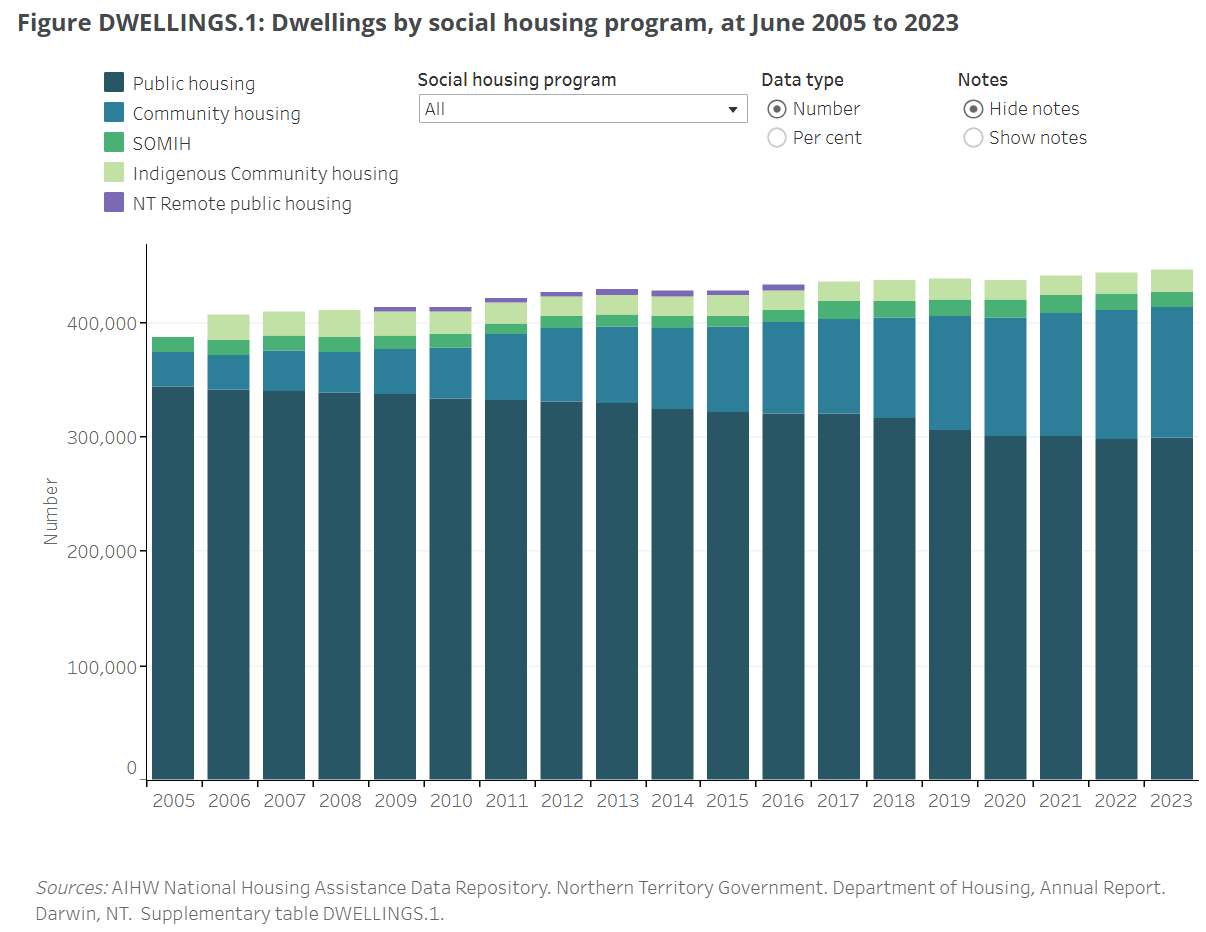
Over the same period, Australia’s population has grew by around 6.8 million people, or 33%.
The following chart shows that in 1955, public housing accounted for 22% of all housing construction in Australia. By 2024, this figure had dropped to roughly 2%:
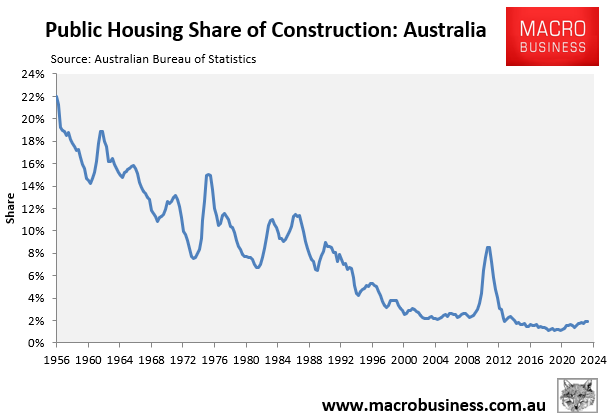
The federal government’s extreme immigration program is making Australia’s social housing shortfall worse, as illustrated below:

Due to extreme levels of immigration, Australia’s population has increased by 8.4 million this century.
Between 1955 and 1993, roughly one public housing unit was built for every twelve to thirty new Australians.
As of Q1 2024, there was only one publicly built dwelling for every 186 new residents of Australia:

Thus, the collapse of public housing construction has occurred alongside the unprecedented influx of new migrants into Australia.
Increasing the stock of social housing is a worthwhile goal. Nobody disputes that. However, public housing construction cannot possibly keep pace with Australia’s net overseas migration, which is officially projected to remain high indefinitely.
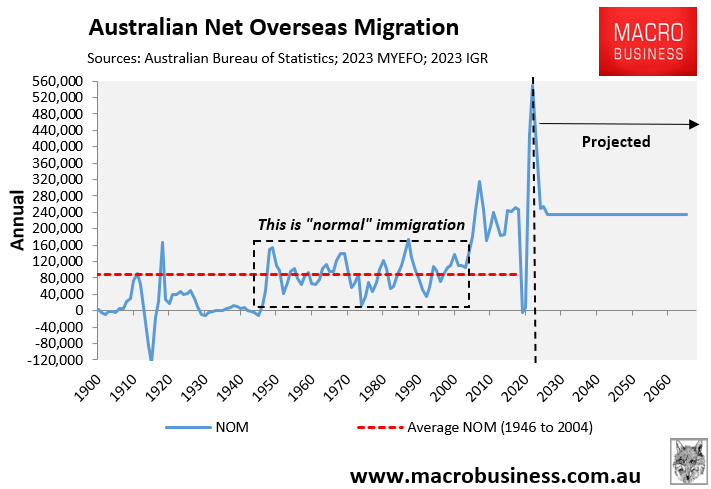
The 2023 Intergenerational Report projected that Australia’s population will swell to 40.5 million by 2062-63, which is the equivalent of adding another Sydney, Melbourne, and Brisbane to the current population.
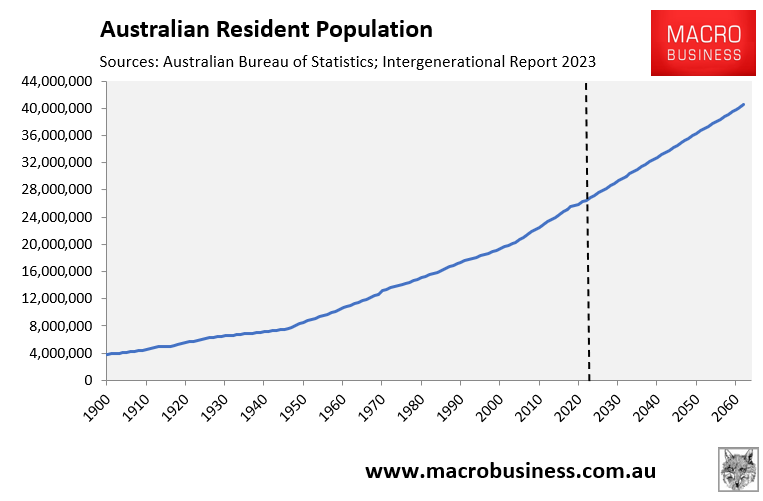
If policymakers, housing advocates, and homeless groups were serious about resolving Australia’s housing crisis, they would push the federal government to lower demand by limiting net overseas migration to reasonable historical levels of less than 120,000 per year.
This is the reality of the situation.

